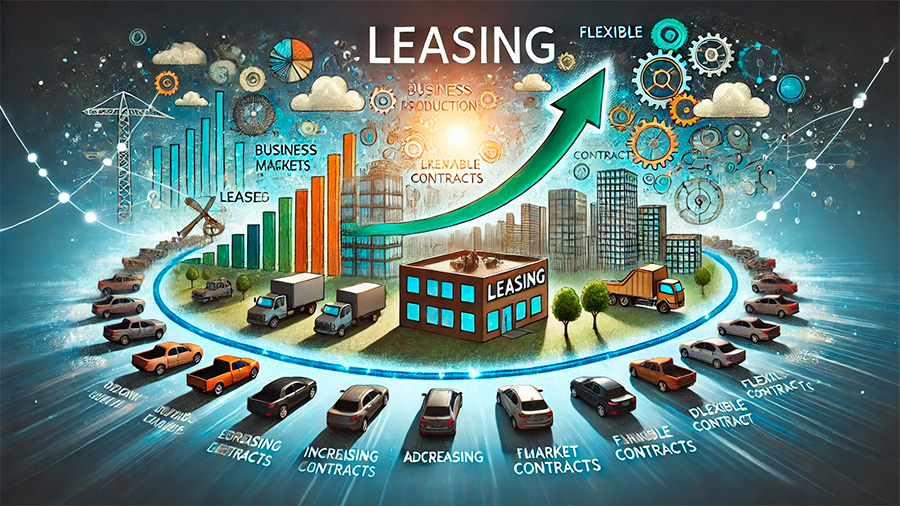For small businesses, expanding operations often requires access to new equipment, technology, or physical space. However, the significant upfront investment needed to purchase these assets can be a barrier to growth. Leasing provides an alternative that allows businesses to acquire necessary tools and resources without large capital outlays, making it an effective strategy for facilitating expansion.
This article explores how leasing can help small businesses expand by providing financial flexibility, reducing upfront costs, and offering access to modern equipment.
Reduced Upfront Costs for Equipment and Technology
One of the most immediate advantages of leasing is the reduction in upfront costs. Purchasing equipment, technology, or vehicles requires substantial financial resources, which can deplete a small business’s cash reserves. Leasing, on the other hand, spreads payments over time, allowing businesses to acquire the assets they need without making large initial investments.
For example, a small restaurant looking to expand its operations might lease kitchen equipment, enabling it to grow without diverting too much capital away from other critical areas like staffing, marketing, or renovations. By reducing upfront costs, leasing allows businesses to expand their operations without overstretching their finances.

Preserving Cash Flow for Growth Initiatives
Cash flow management is crucial for small businesses, especially during periods of expansion. Leasing enables businesses to maintain stronger cash flow by eliminating the need for large upfront payments. With more cash on hand, businesses can invest in growth initiatives like expanding their product line, entering new markets, or hiring additional staff.
For instance, a construction company leasing heavy machinery can preserve its cash flow, using the savings to bid on new projects or expand its service offerings. By maintaining liquidity, businesses are better positioned to seize new opportunities and support their growth strategy.
Access to Modern Equipment and Technology
Staying competitive in today’s market requires access to the latest equipment and technology. However, the cost of purchasing cutting-edge tools can be prohibitive for small businesses. Leasing provides a way to access modern equipment without the financial burden of ownership. Businesses can upgrade leased equipment as new technologies emerge, ensuring they remain efficient and competitive.
For industries that rely on constantly evolving technology—such as healthcare, manufacturing, or IT—leasing allows businesses to stay current without the risk of owning outdated equipment. This access to modern technology enhances productivity, improves service delivery, and supports long-term growth.

Flexibility to Scale Operations
Leasing offers businesses the flexibility to scale their operations as needed. Whether a company is expanding into new markets, increasing production capacity, or launching new services, leasing allows them to acquire the necessary assets without the long-term commitment of ownership. This flexibility is particularly valuable for small businesses that may need to adapt quickly to changing market conditions.
For example, a small logistics company that needs to expand its fleet of vehicles can lease additional trucks to meet growing demand. If the business continues to grow, it can extend the lease or lease more vehicles. If demand decreases, the company isn’t tied to owning the vehicles and can return them at the end of the lease term, avoiding the costs of maintaining underutilized assets.
Minimized Maintenance and Repair Responsibilities
Owning equipment comes with the responsibility of maintenance and repairs, which can add to the financial burden of small businesses. Leasing agreements often include provisions for maintenance and repairs, reducing the risk of unexpected expenses. The lessor typically handles these responsibilities, ensuring that the equipment remains in good working condition throughout the lease term.
This arrangement is especially beneficial for businesses that rely on expensive or specialized equipment. By transferring maintenance responsibilities to the lessor, businesses can focus on growth rather than worrying about equipment downtime or repair costs.
Tax Benefits and Financial Planning
Leasing can offer tax advantages that further support business growth. Lease payments are often classified as operating expenses, meaning they can be deducted from taxable income. This reduces a business’s overall tax liability and improves cash flow, providing additional financial flexibility for expansion.
For small businesses looking to grow, these tax benefits can make leasing an even more attractive option compared to purchasing, where only depreciation and interest may be deductible. By reducing tax liabilities, businesses have more resources available to fund growth initiatives, making leasing an effective tool for expansion.
Conclusion
Leasing provides small businesses with the financial flexibility, access to modern equipment, and reduced upfront costs needed to support expansion. By preserving cash flow, minimizing maintenance responsibilities, and offering tax advantages, leasing allows businesses to scale their operations without the financial strain of purchasing assets outright. For businesses seeking to grow efficiently, leasing is a practical and strategic option that supports long-term success.


